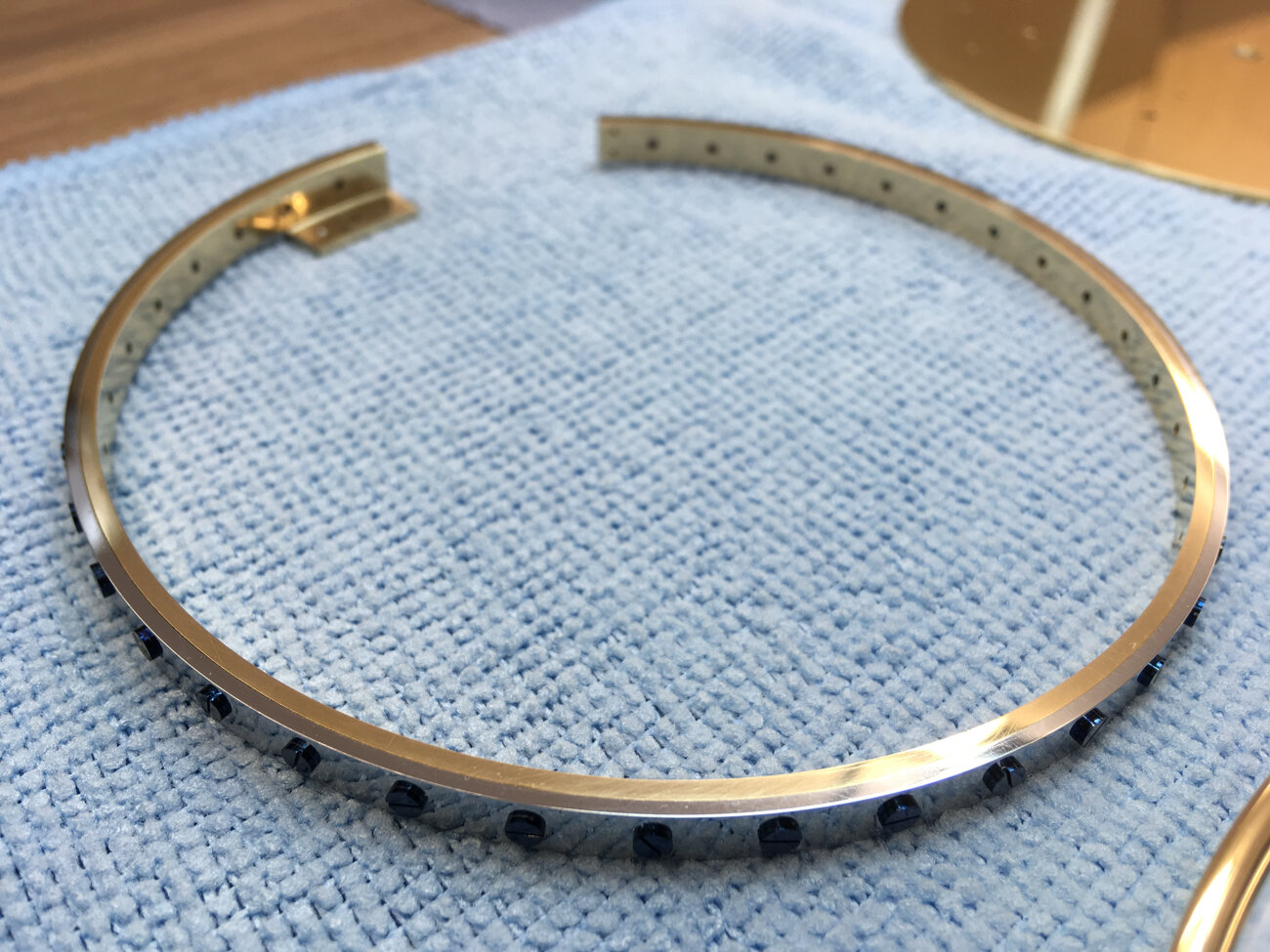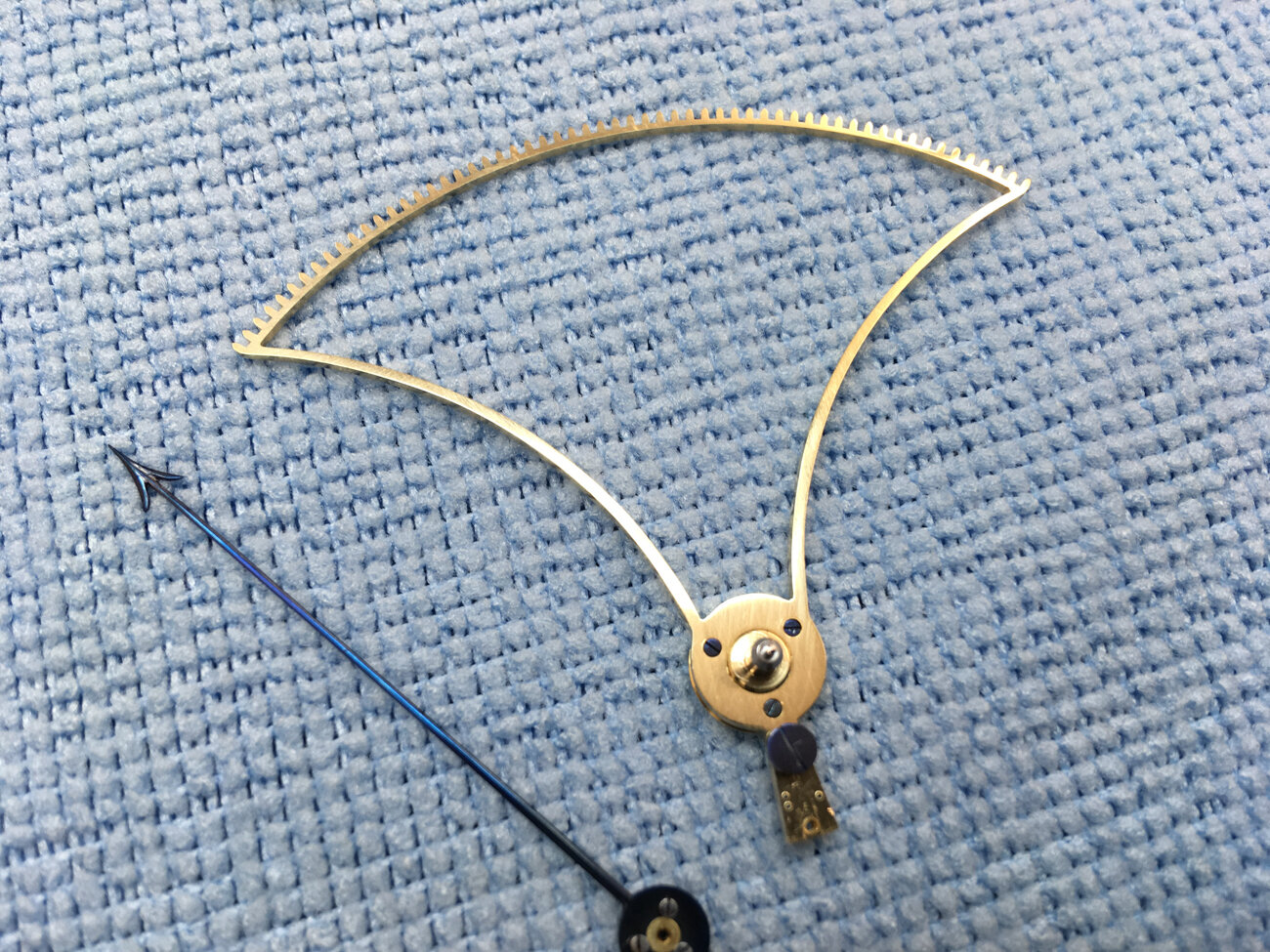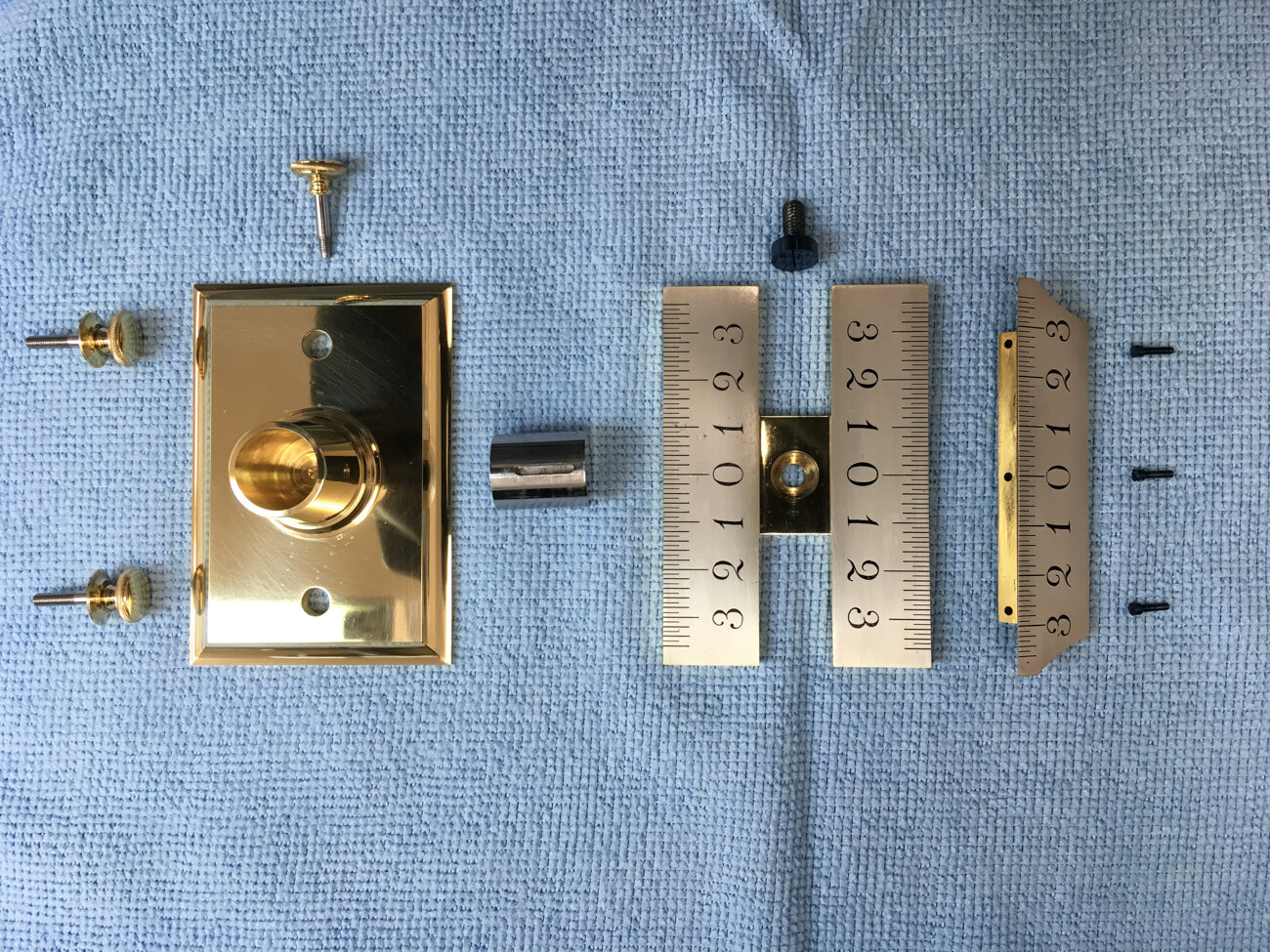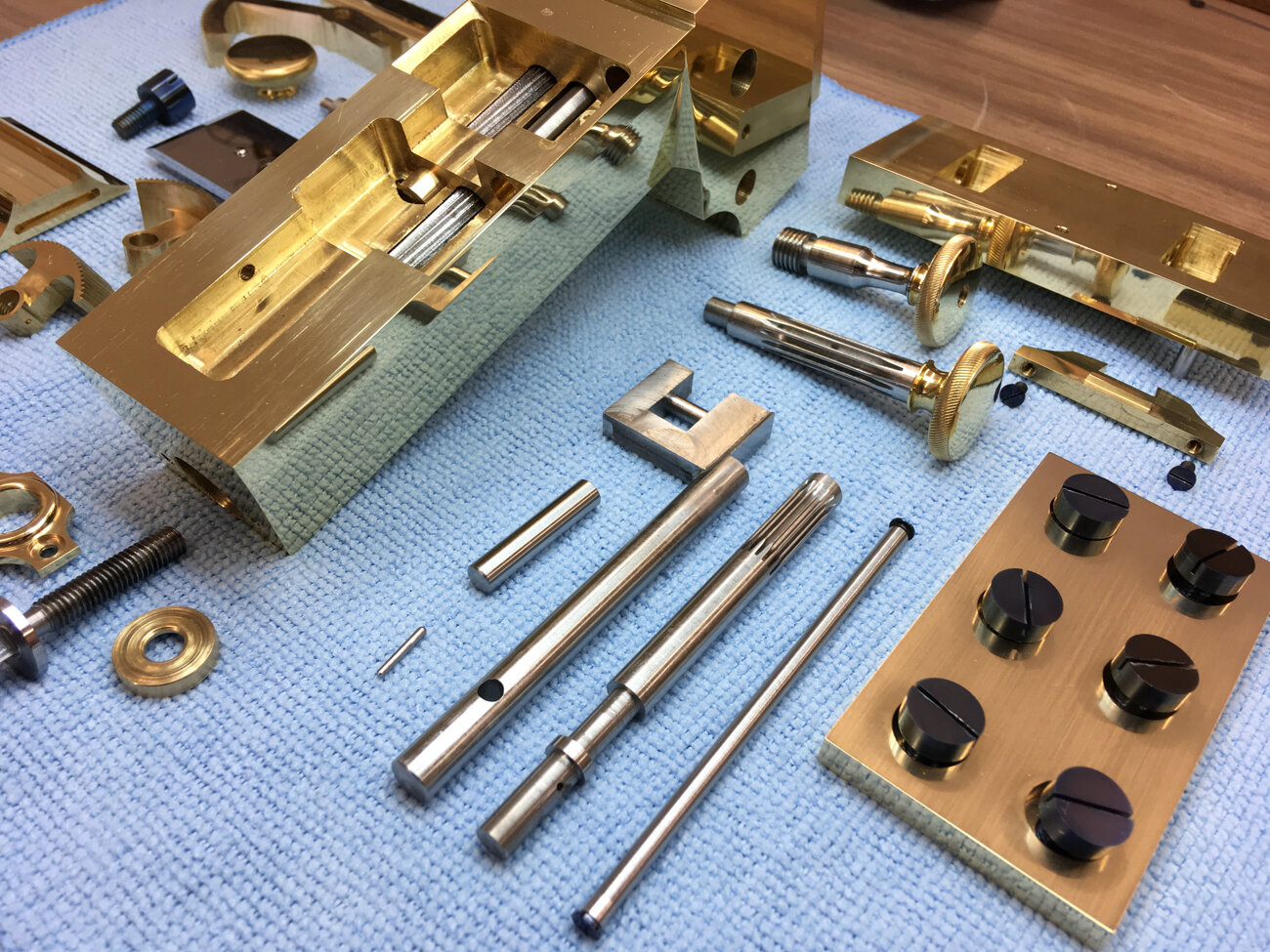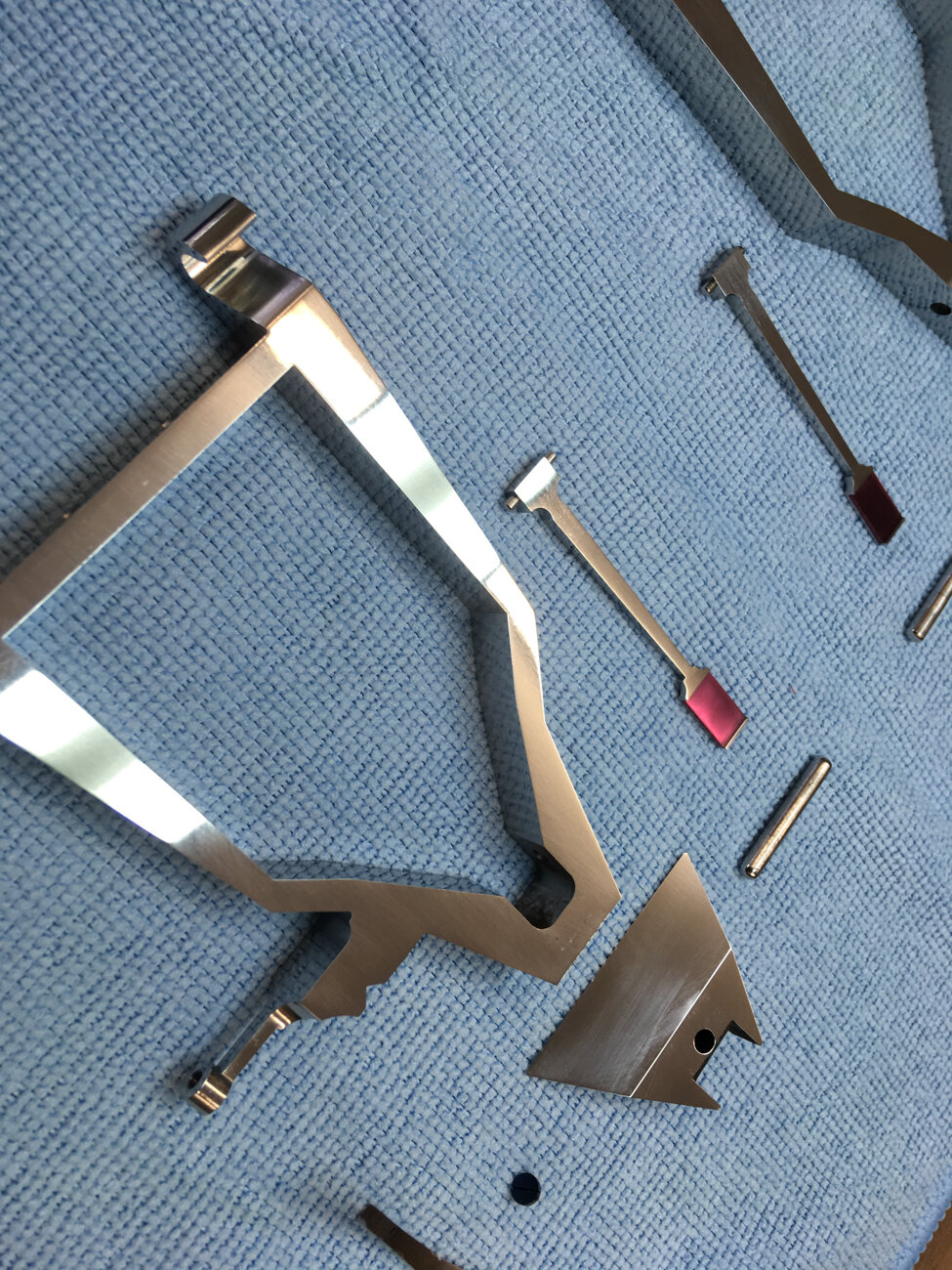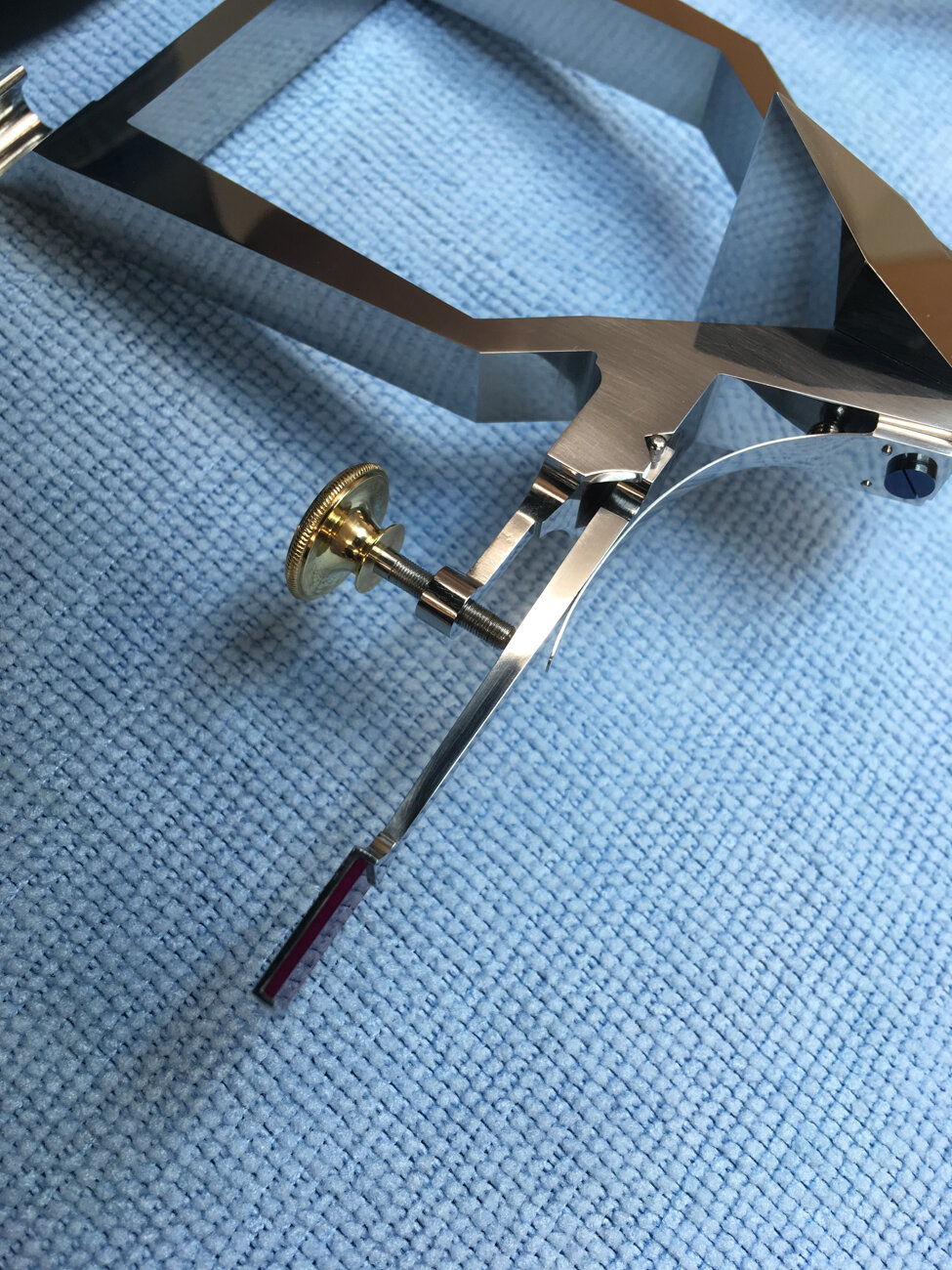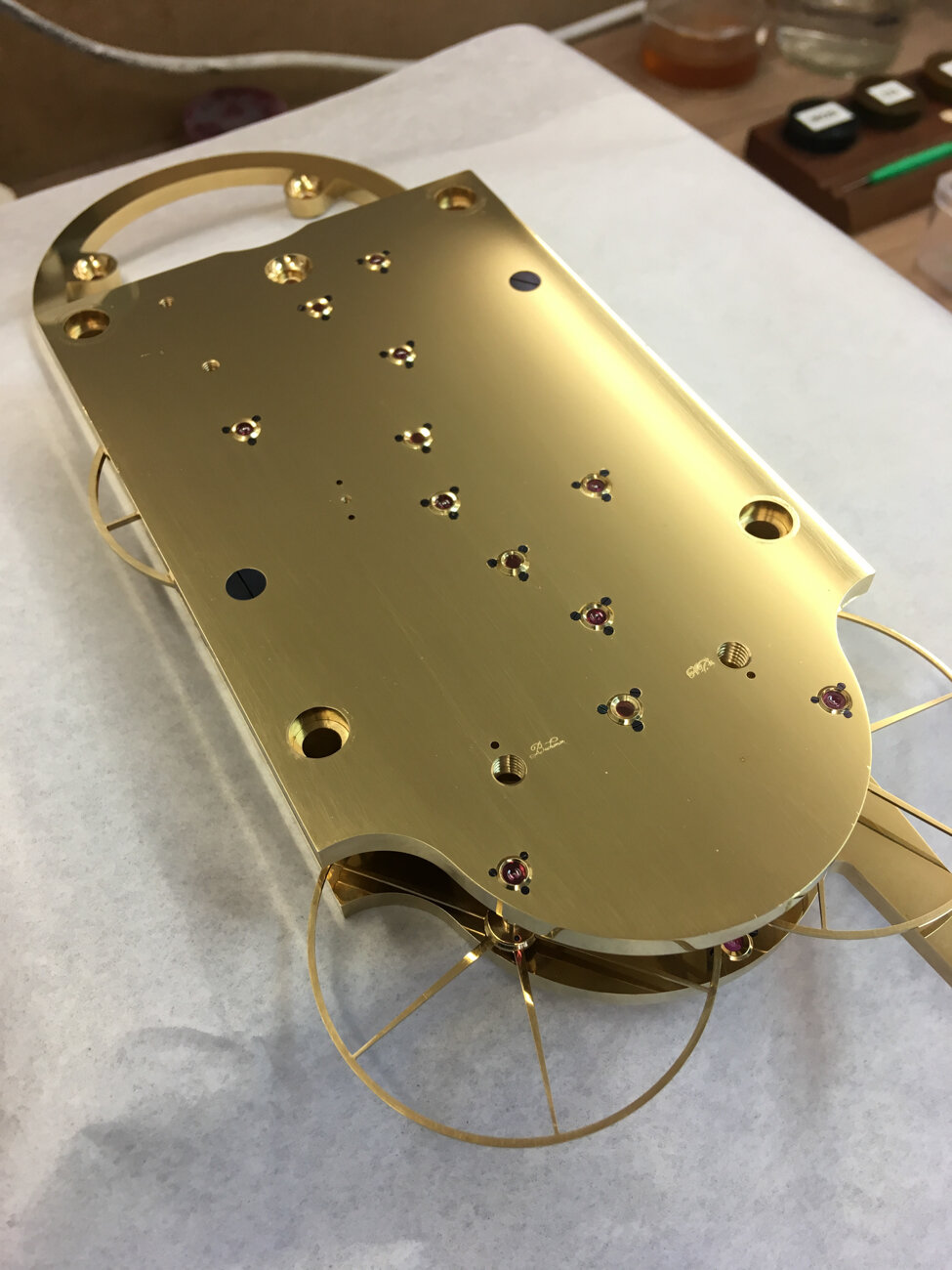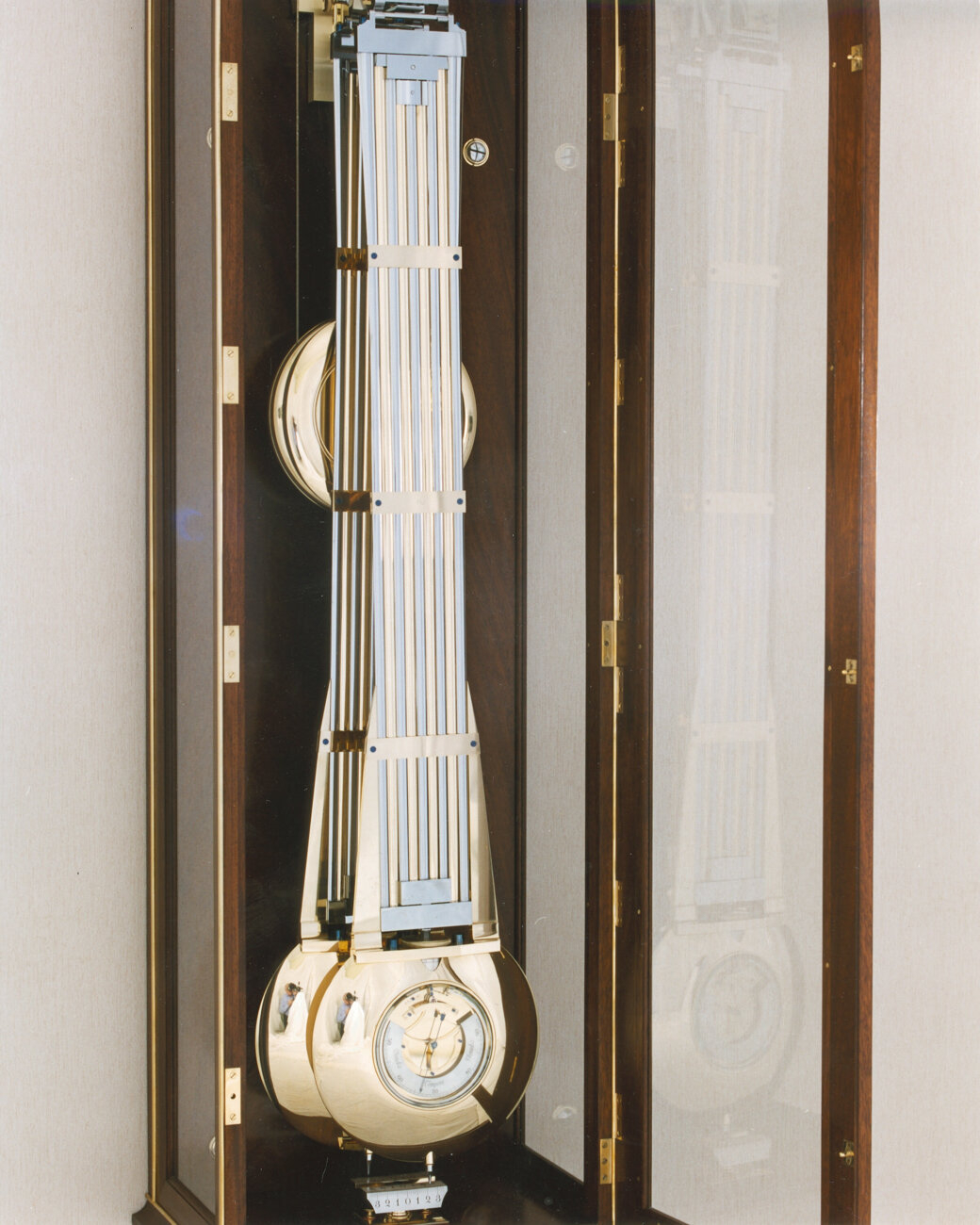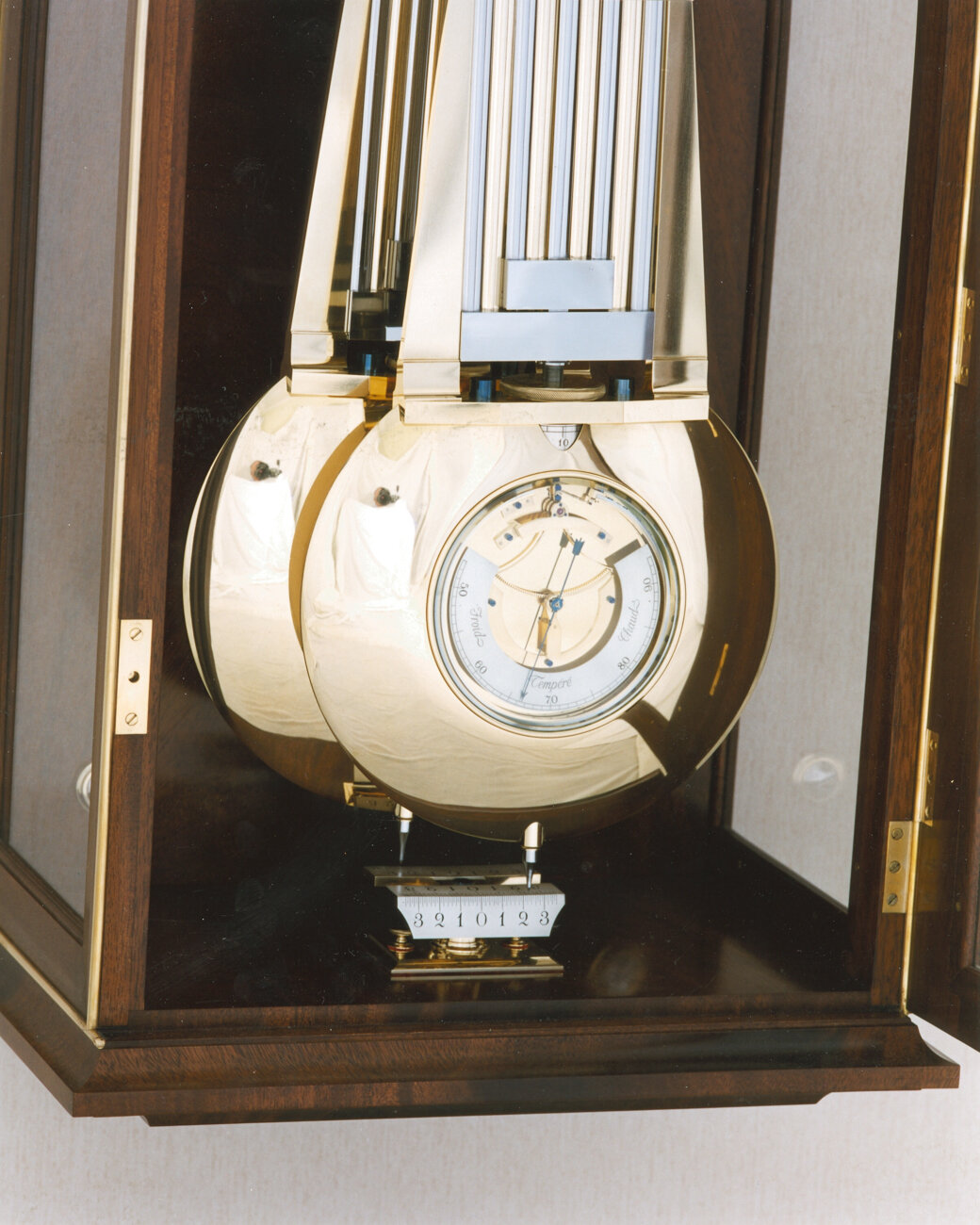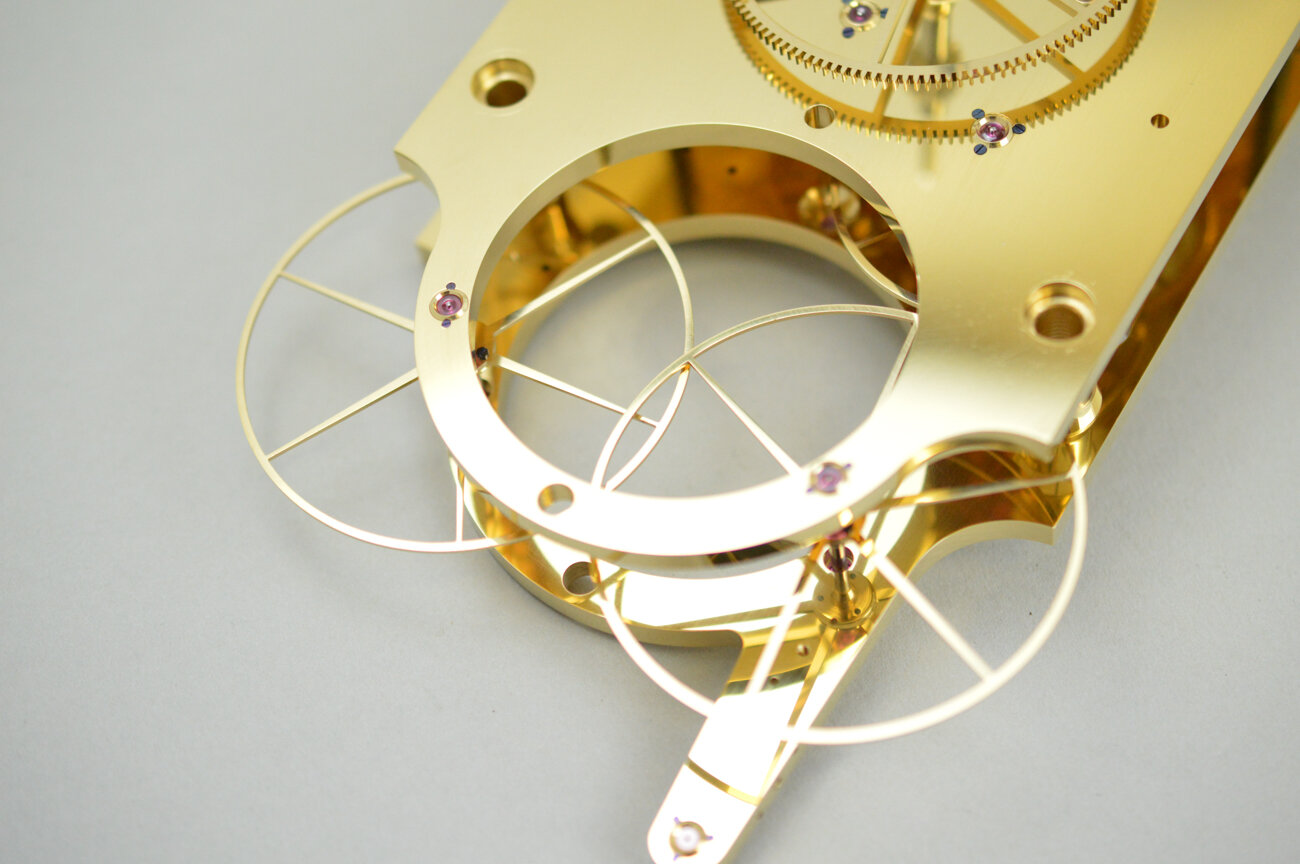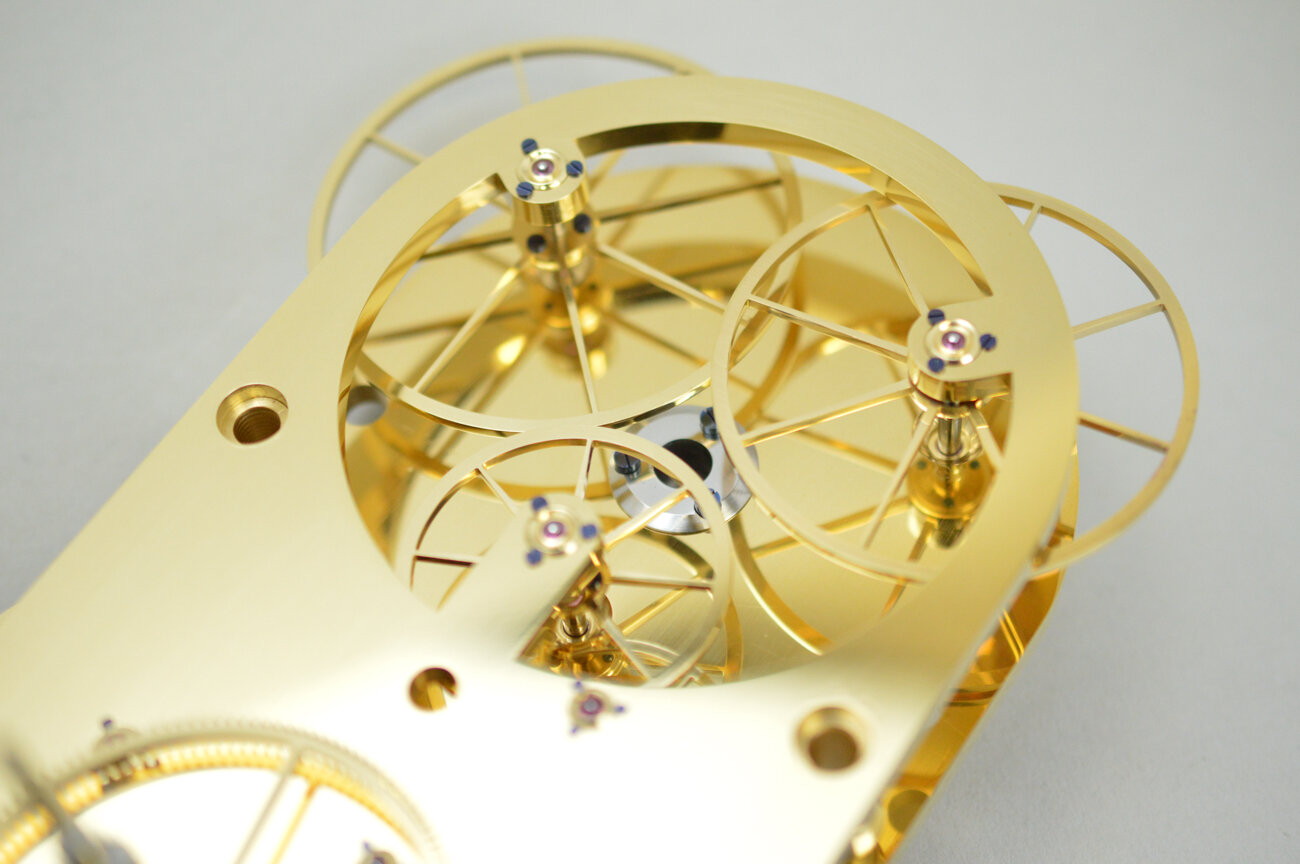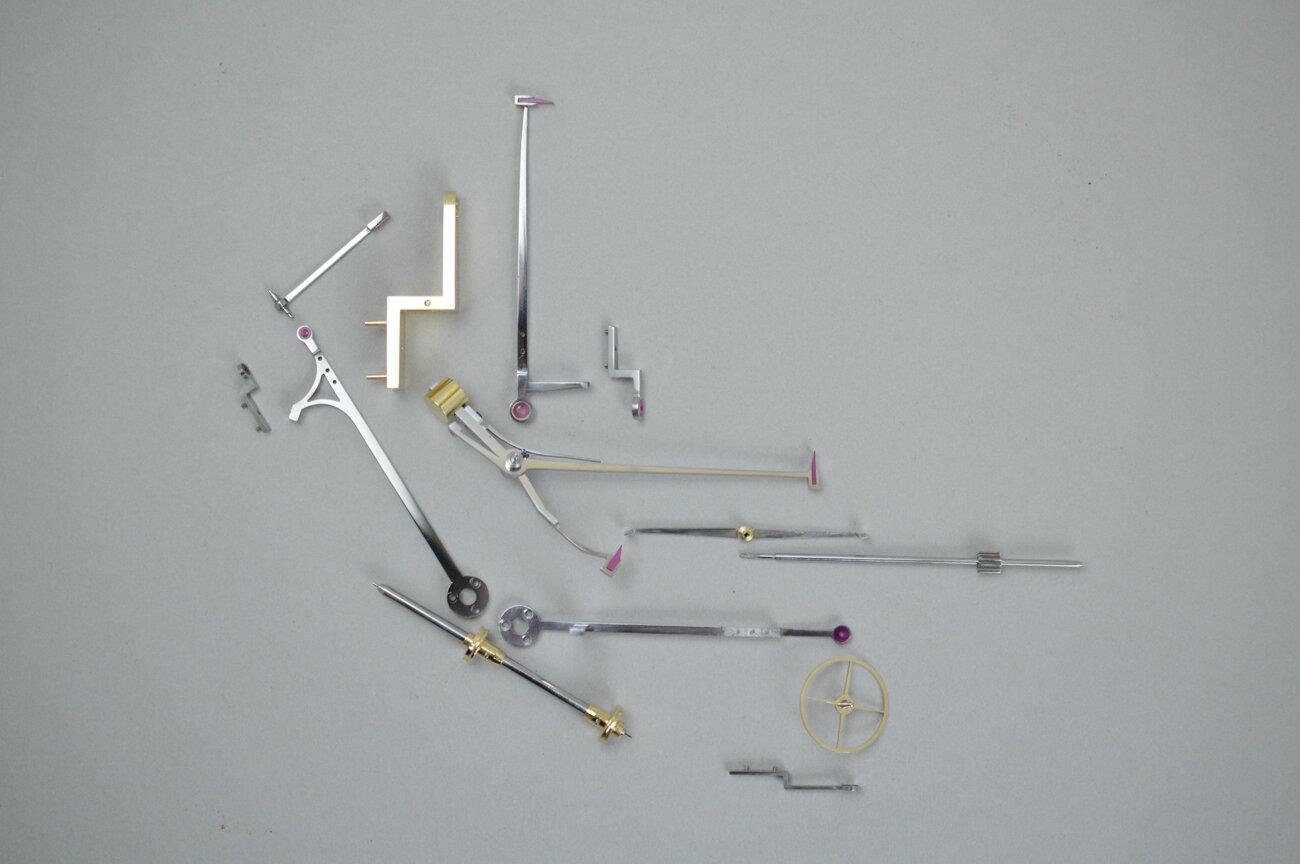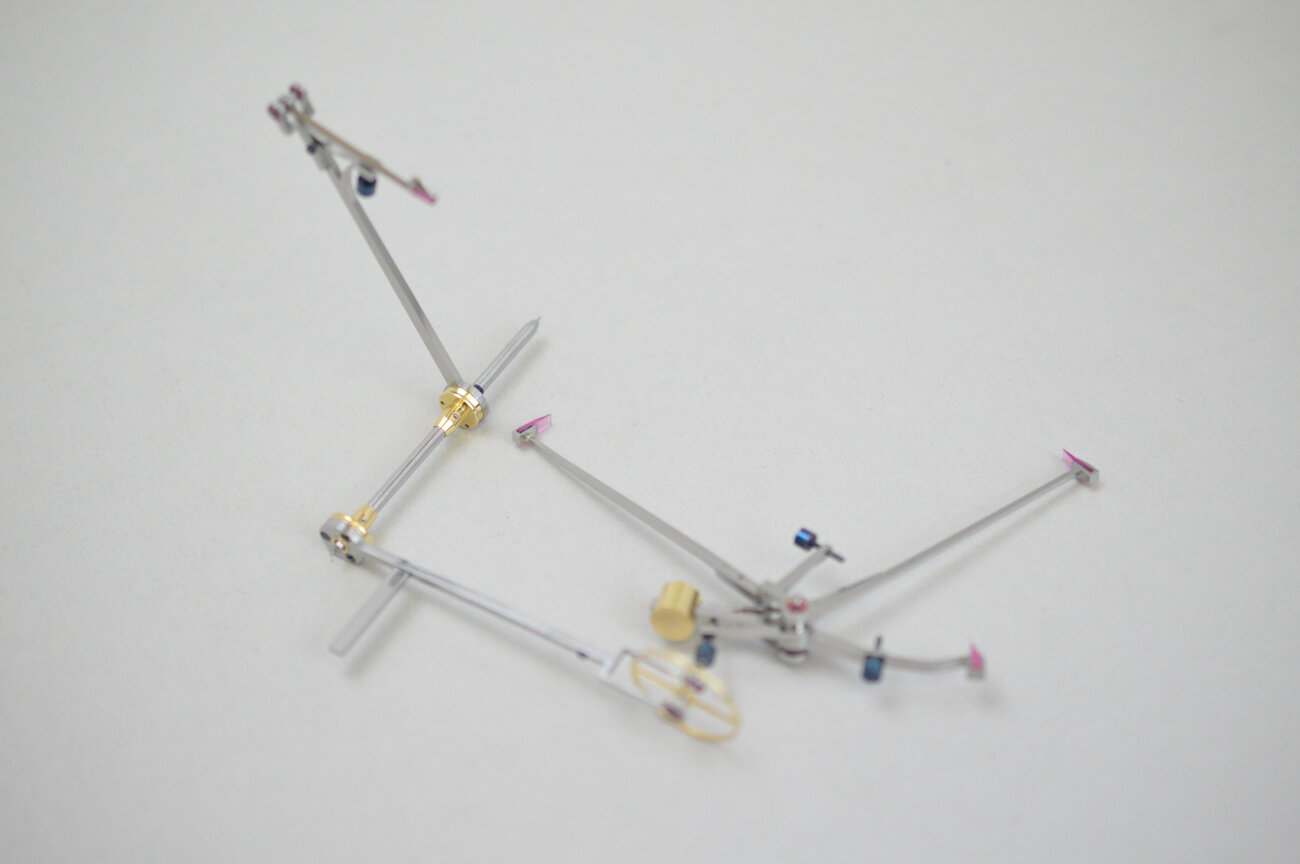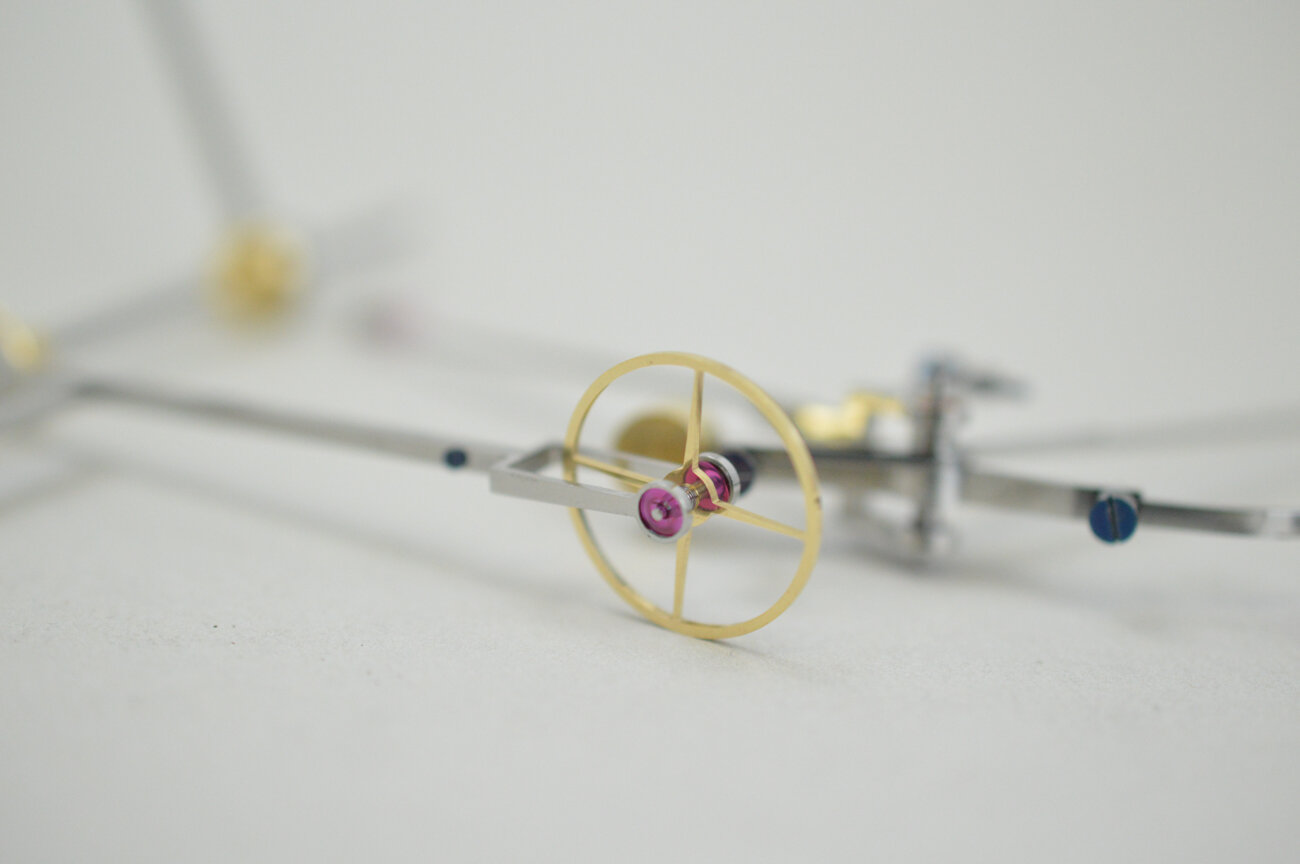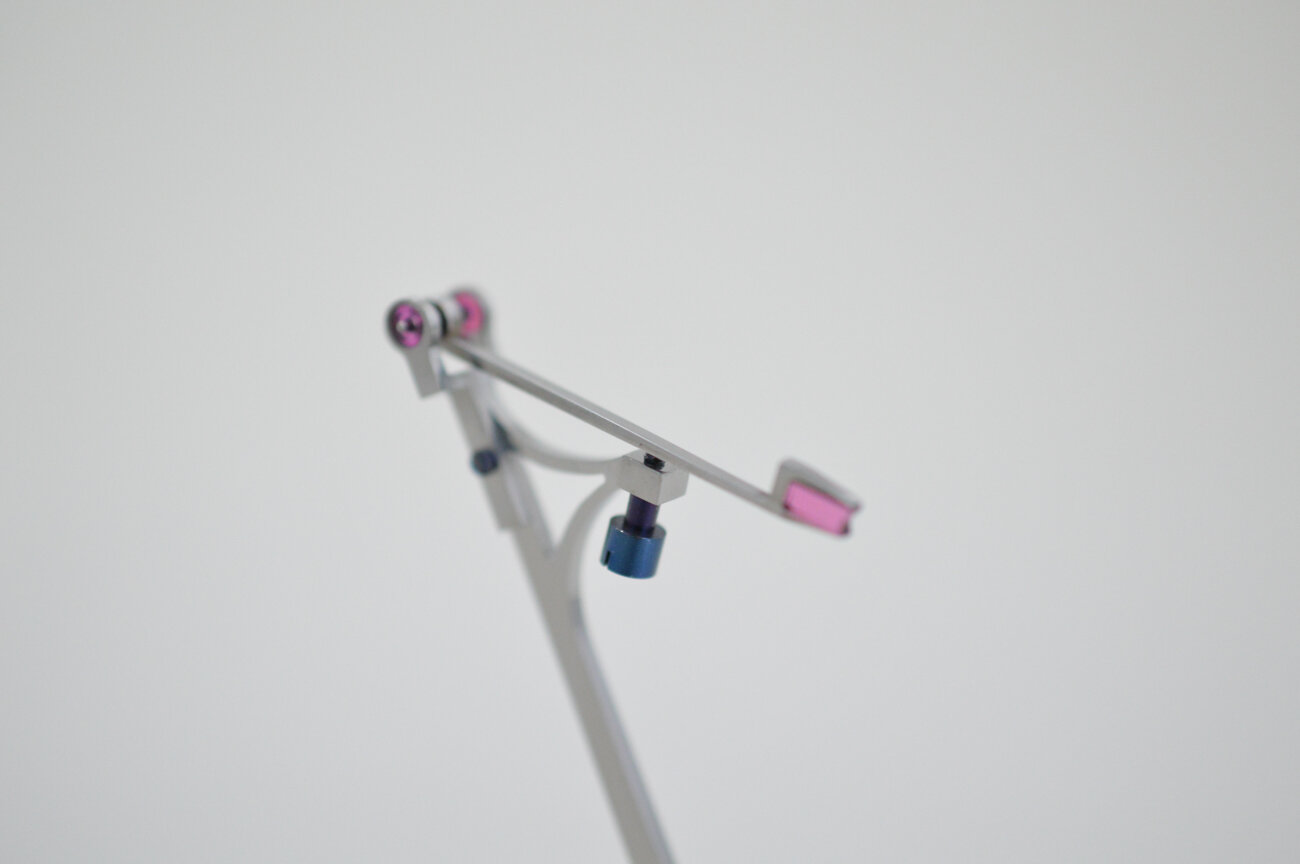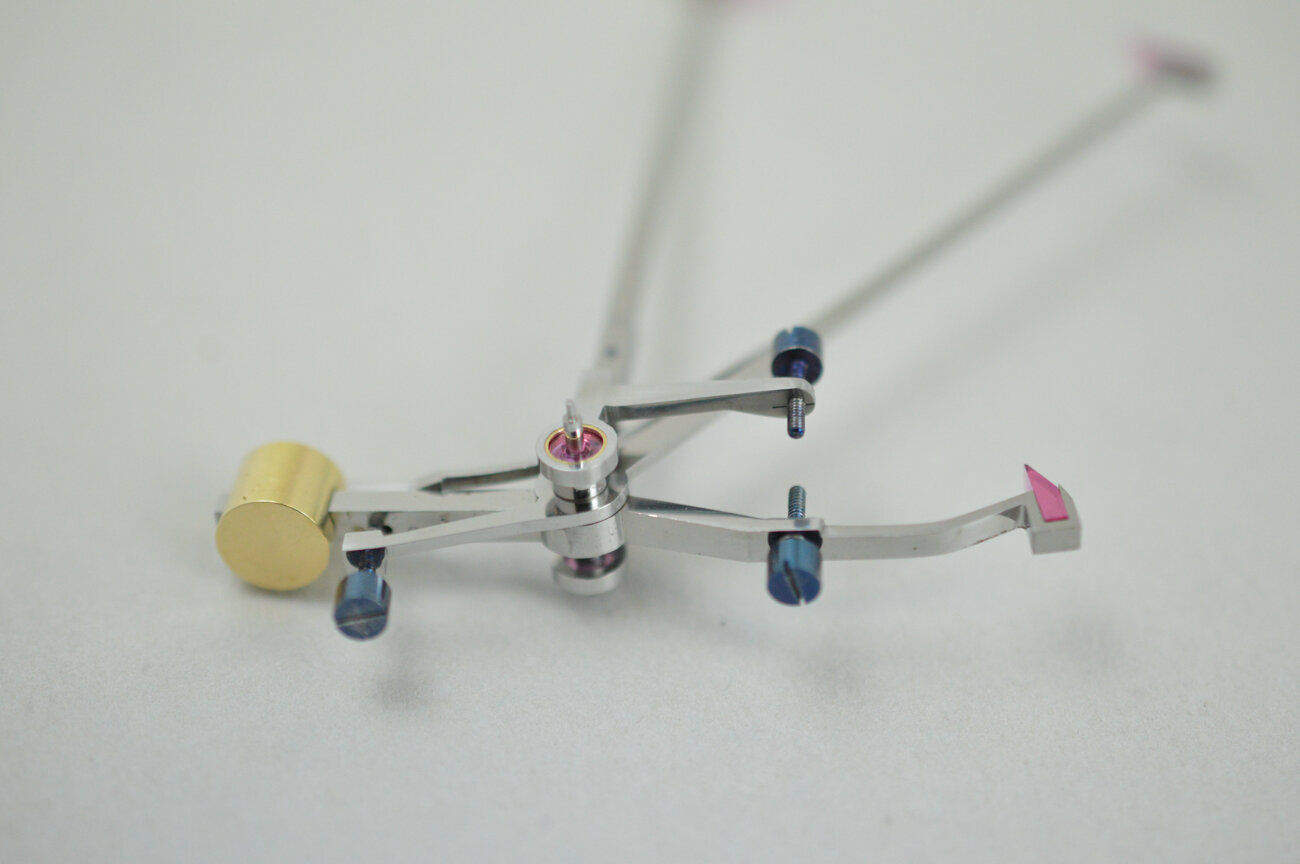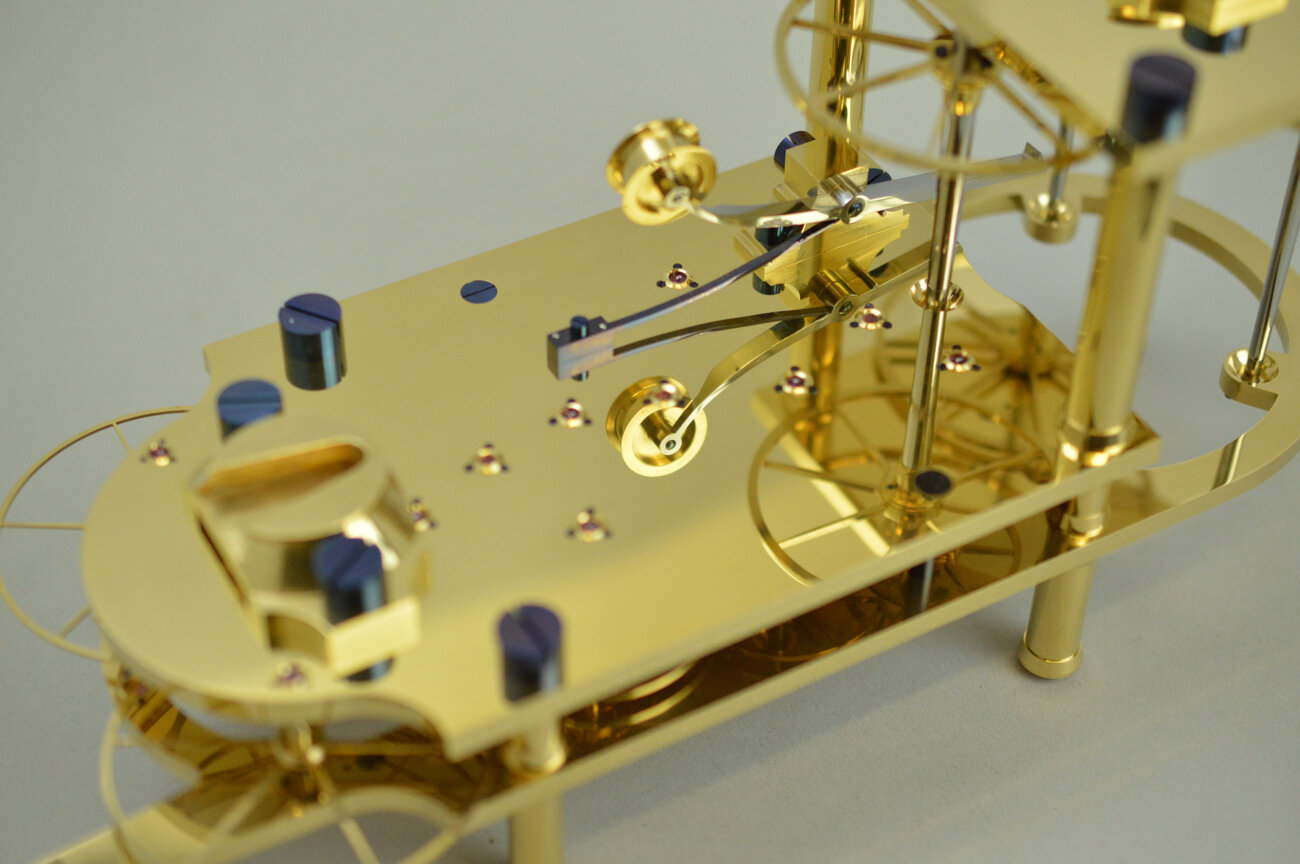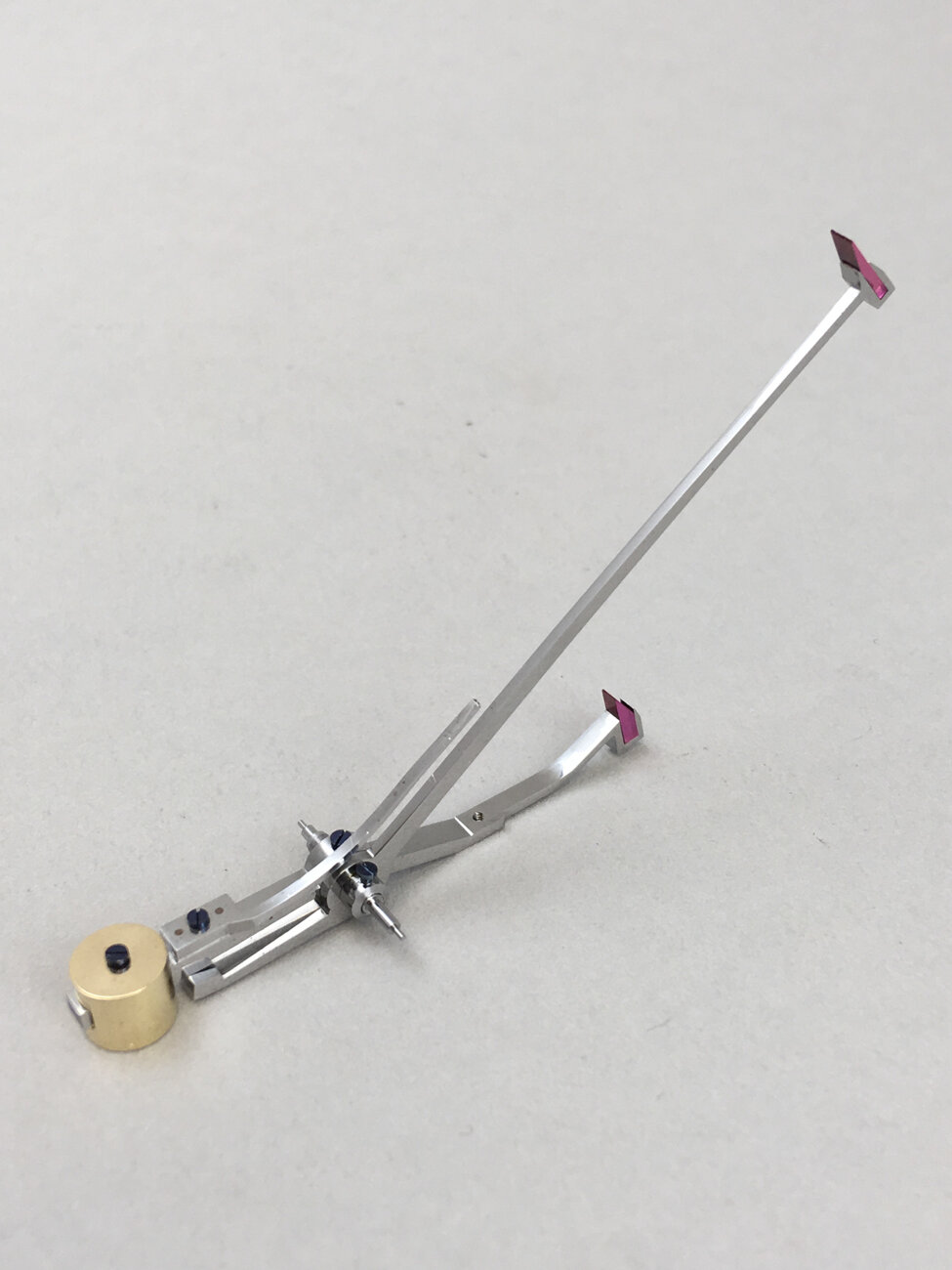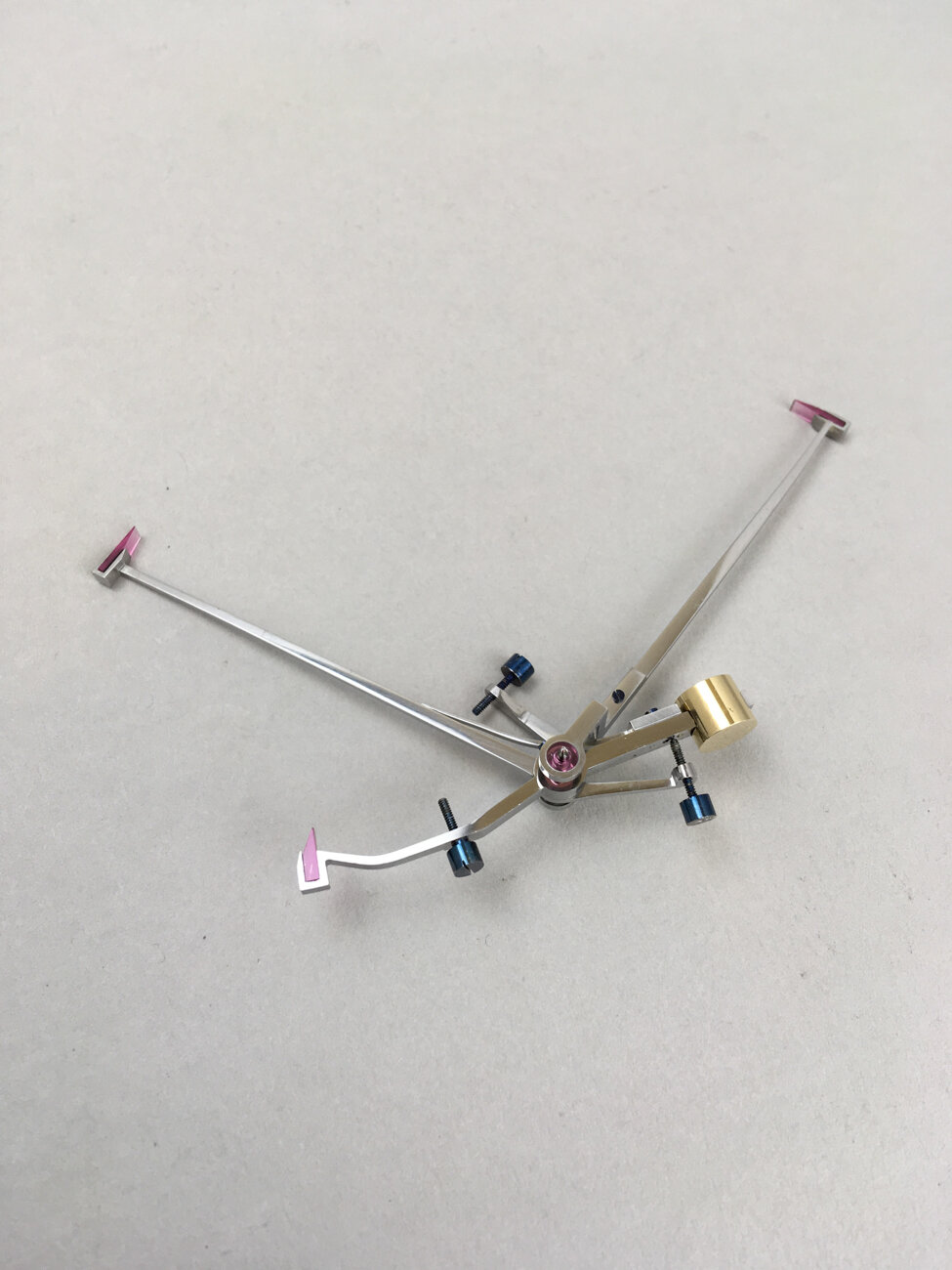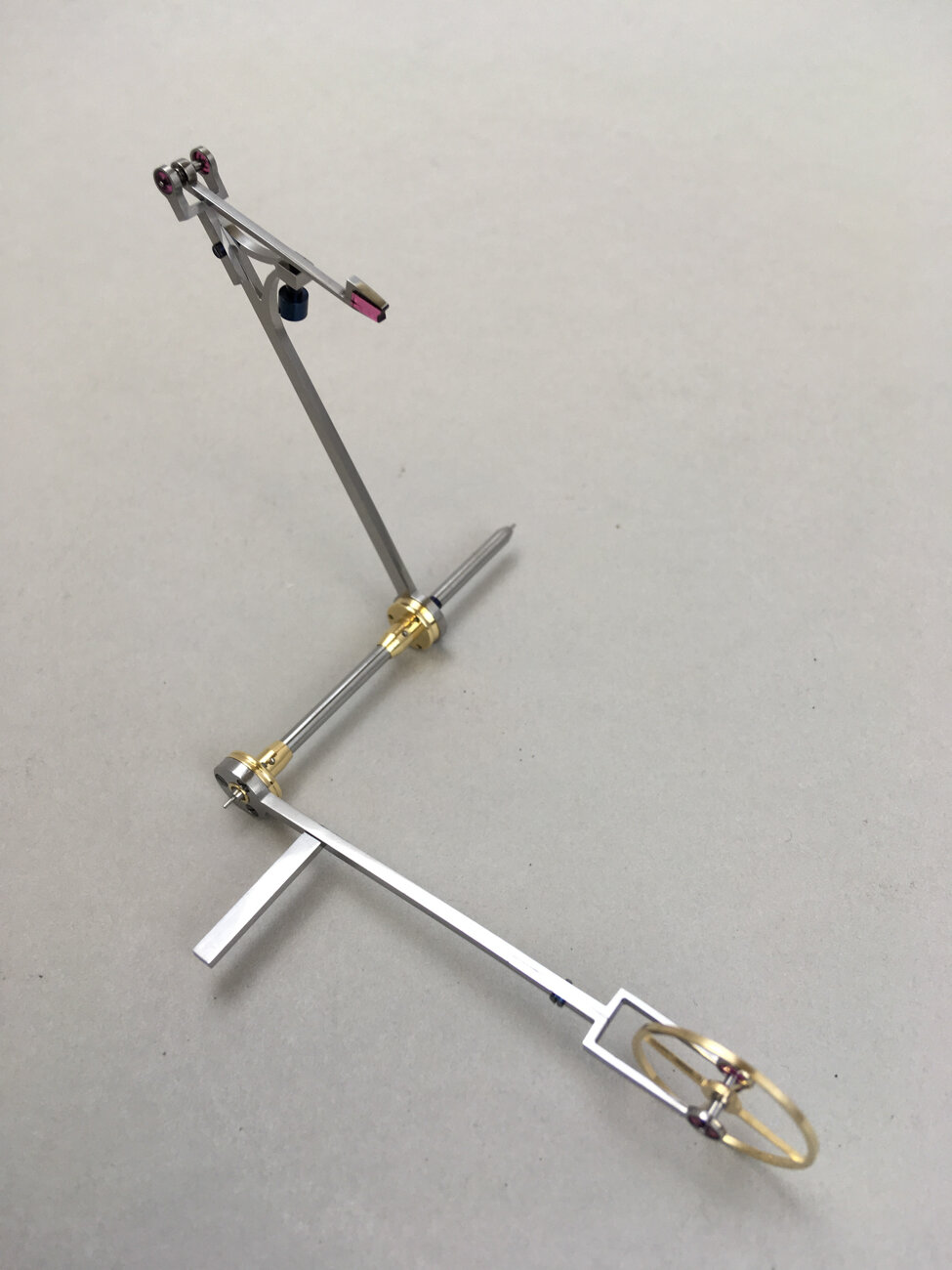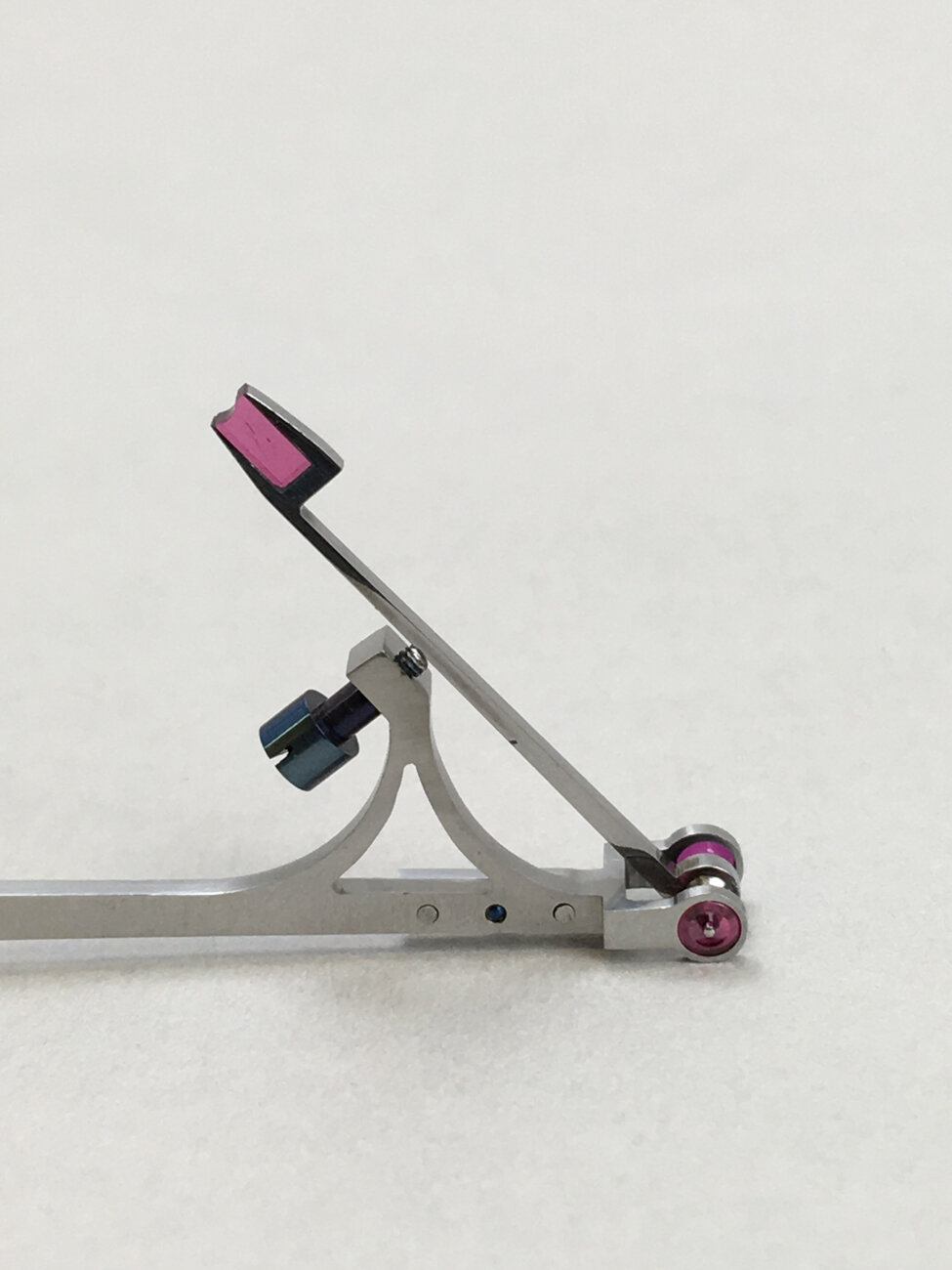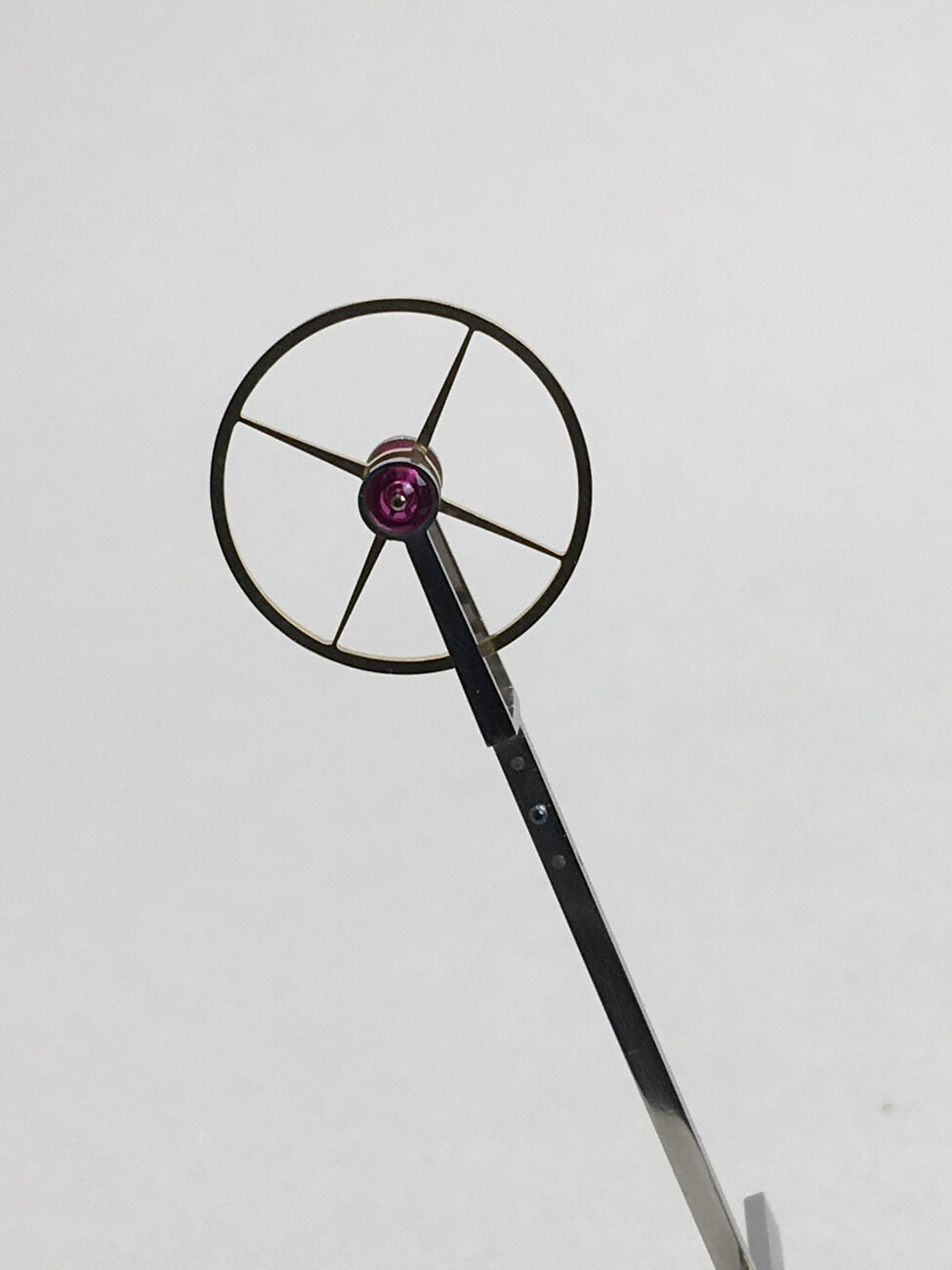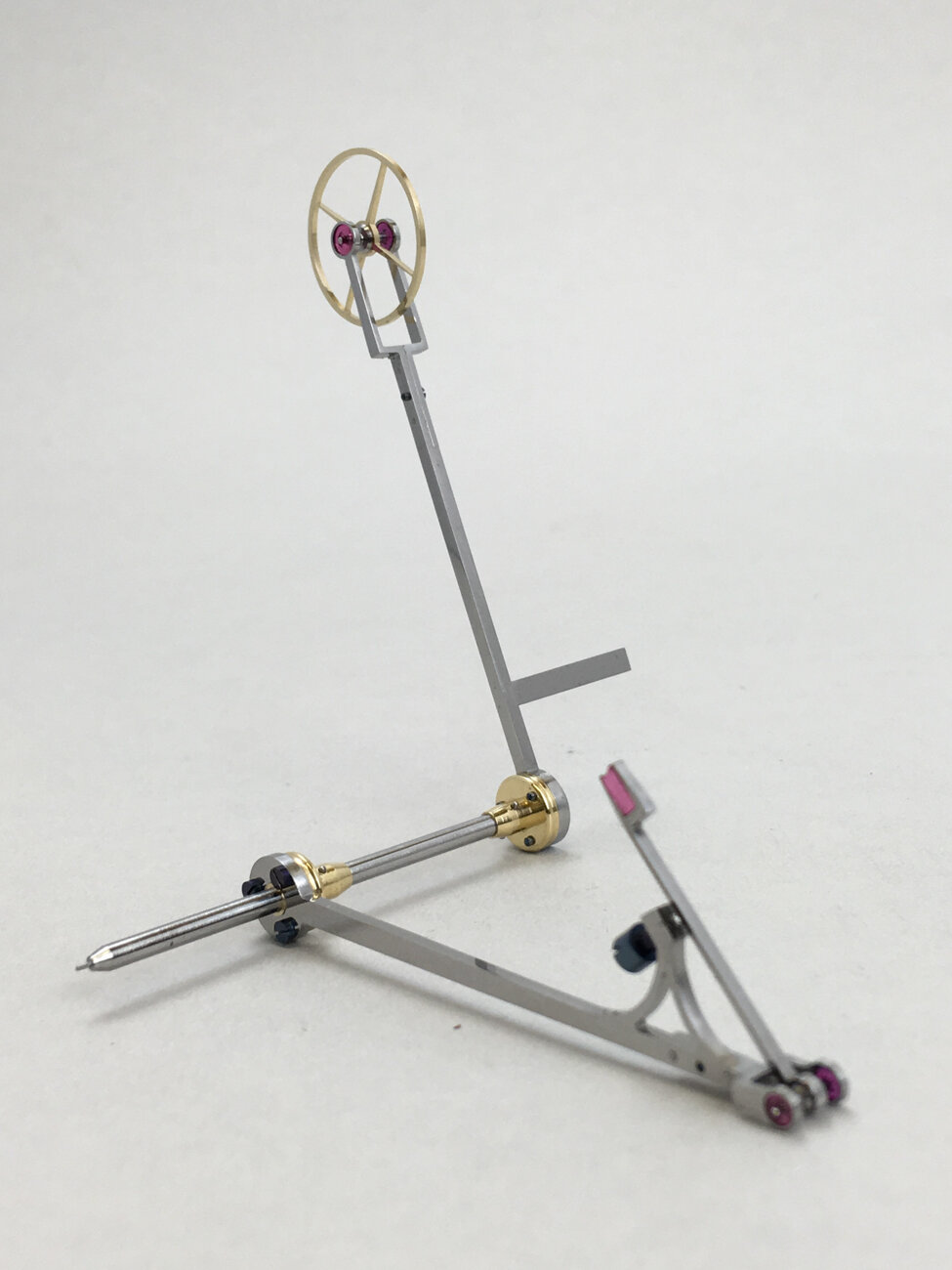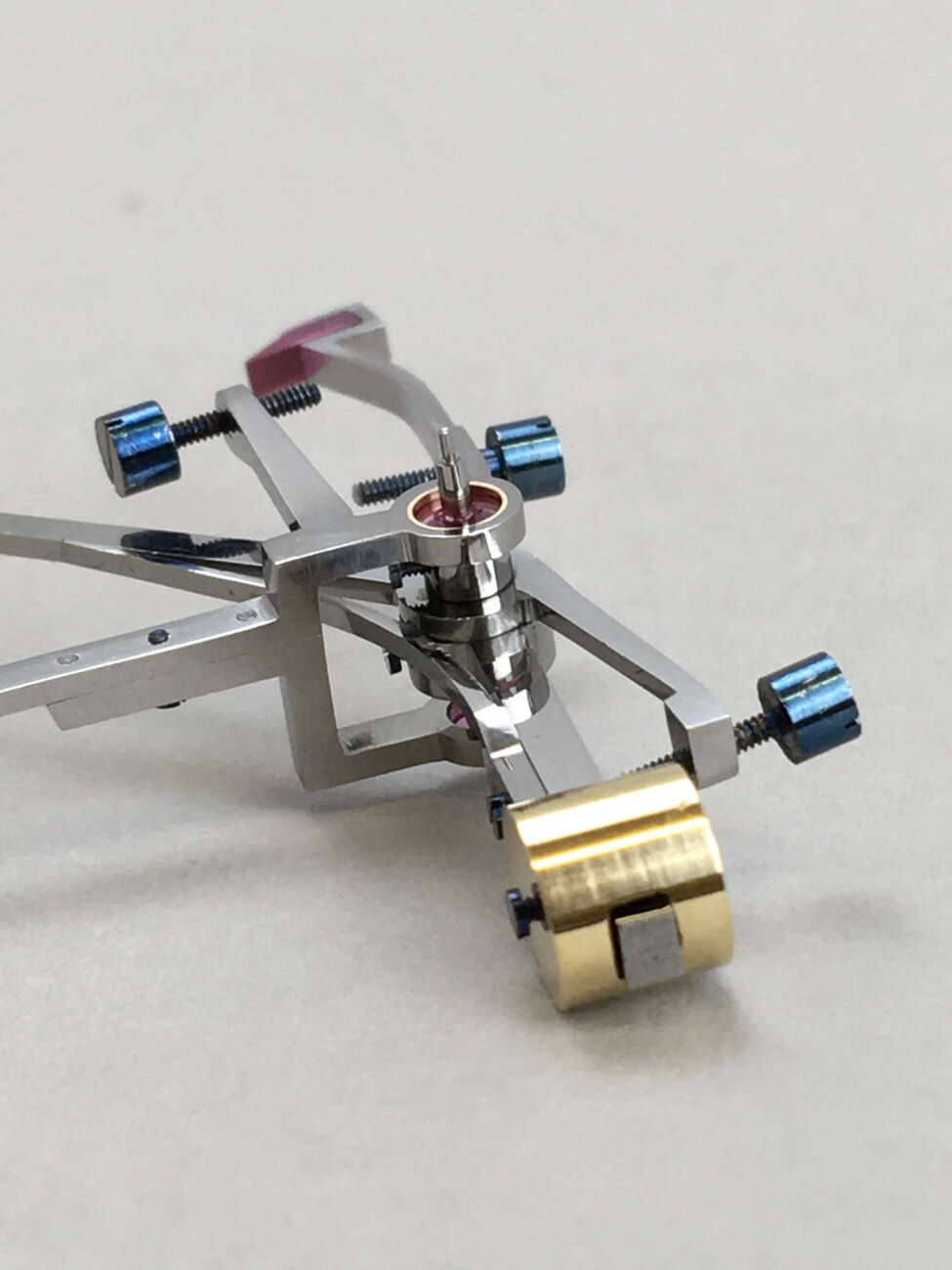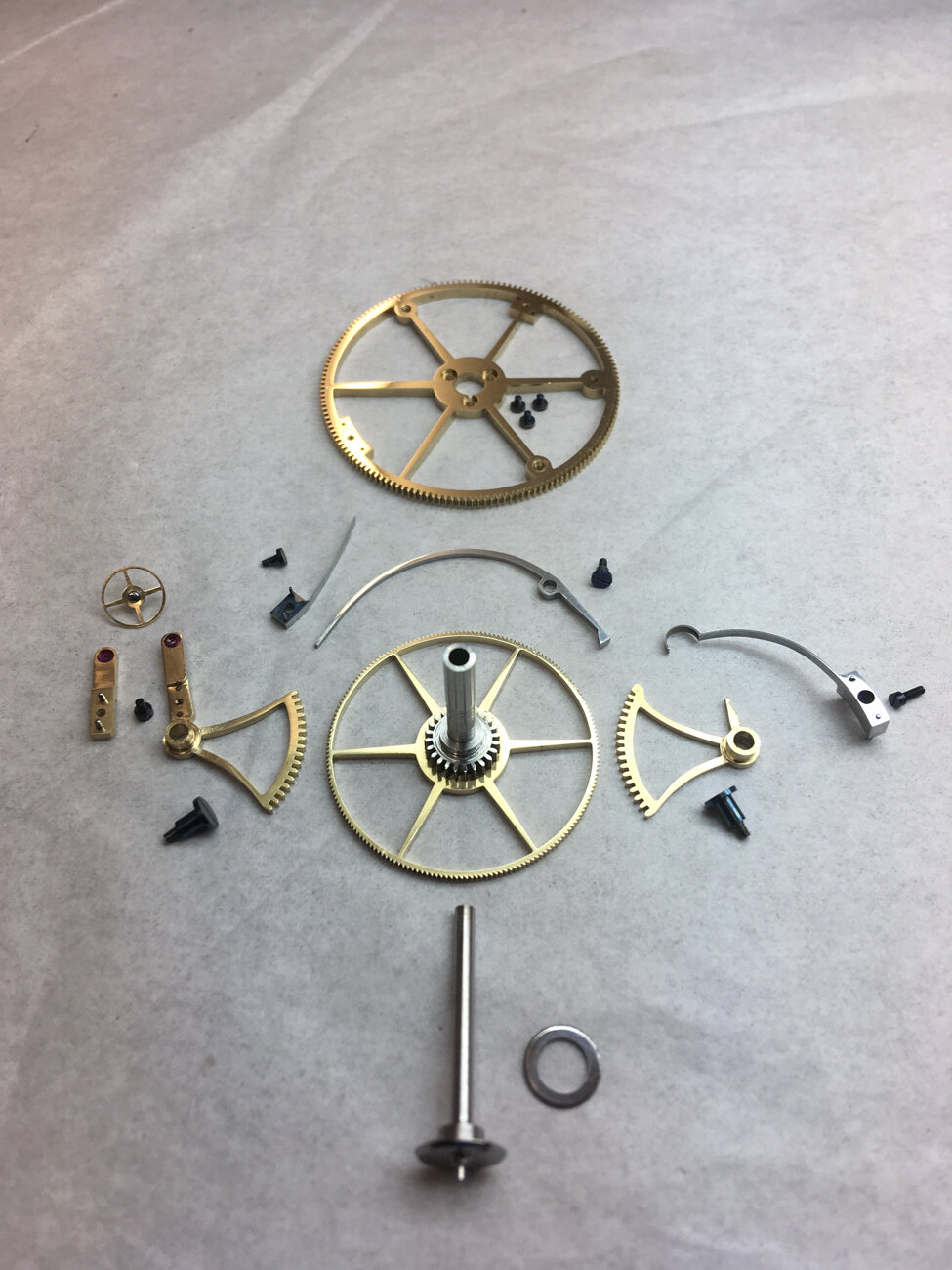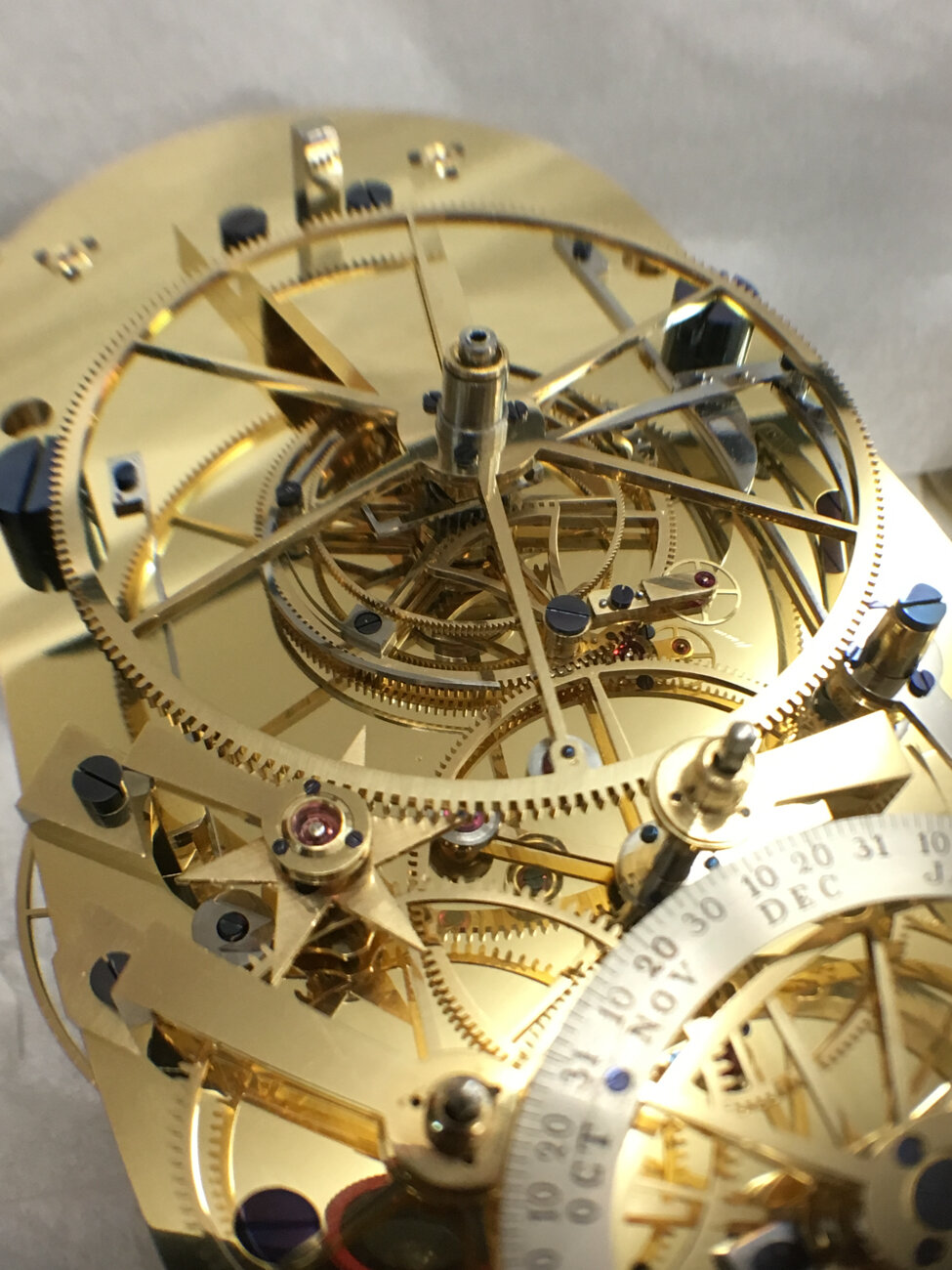Buchanans of Chelmsford – Double Pendulum Regulator No. 4
I recently had the privilege to carry out some work on ‘No.4’ by Buchanan. The regulator had been in America for some years before being shipped over to the UK where it has been ever since. It had been giving reliable trouble-free service up until just before the work was carried out when it began to give problems, hence the need for maintenance. The regulator is now 15 years old so it is understandable that servicing should be necessary, but on dismantling the clock a certain amount of damage was found. This was mainly cracked jewel holes and bent anti-friction wheels, damage that probably occurred during its trip over from America. I carried out restorative maintenance and fully serviced the clock as the client wanted it returning to ‘as new’ condition.
Double Pendulum Anti Phase
The two movements are completely independent of each other, except for sharing the driving weight. Each movement has its own pendulum; however, both pendulums are suspended from a common suspension point. This enables a phenomenon often referred to as ‘resonance’ to occur. The two pendulums share each other’s natural mechanical frequency by resonating through the suspension block. This causes the two pendulums to share and transfer energy between each other making for a far more stable rate. For example, if the front pendulum is disturbed however minutely the rear pendulum with do the opposite in compensation. The pendulums will then go through cycles of passing the power back and forth until they stabilise again. This ‘resonance’ phenomenon causes the two pendulums to lock in ‘Anti-phase’ with each other.
Pendulums
The two pendulums are of massive construction. They are based on Harrison’s gridiron pendulum design, but the execution is more in the French style and is reminiscent of makers such as Berthoud and Janvier. The outer steel rods of each assembly reverse taper as well as being elliptical in section.
The front pendulum carries an integrated thermometer with circular bi-metallic strip and rack and pinion mechanism.
Knife Edges
The pendulums are suspended by means of hardened steel knife edges resting on solid synthetic sapphire blocks. These blocks are massive and must have been extremely difficult to make. To protect these blocks when fitting or adjusting the pendulums an ingenious system of raising and lowering the pendulums is fitted. By means of a key the user can wind an arbor which raises a steel plate and in turn lifts the pendulum cages clear of the blocks before clamping the pendulums against the suspension bracket. Each pendulum suspension is also adjustable in two plains using a system of pinions and quadrants hidden within the suspension bracket itself.
Anti-friction Wheels
No. 4 has anti-friction roller wheels through the entirety of both movements. All the anti-friction wheels are jewelled with all jewels mounted in chatons.
The wheels vary in size and thickness through the movement with heavy gauge being used at the barrel end of the trains and exceptionally light weight at the escapement.
Escapement
The escapement is a form of gravity escapement of Buchanans own design. Because the pendulums are only receiving impulse in one direction a conventional escapement would only be able to display 2 second intervals on the dials, so in order to give a true seconds indication an extra layer of complexity was required. This is in the form of a secondary count wheel which is powered with its own helical spring remontoir similar to that used in escapements designed by both Airy and Aitkin. The count wheel is unlocked on both sides of the pendulums swing but is only ‘recharged’ when the train is allowed to run when giving impulse.
Dials
There are three sets of dials for the clock, enamel dials after French regulator style, solid silver dials in a more English grained style, and exhibition glass dials, engraved and paint filled.
Functions and complications
The left-hand dial displays Mean Time, hours, and minutes with a dedicated seconds dial below. It also displays Solar Time with a separate hand. The solar hand rotates with the Mean minute hand and utilises Breguets system of ‘sampling’ the position of the ‘Equation of Time’ cam once per minute. The presence of this cam also allows for an Annual calendar disc which is displayed through a cut out section of the dial.
The right-hand movement displays Sidereal Time using a ‘Regulator’ format dial as with Breguet 3671.
Maintaining Power
The maintaining power is of epicyclical gearing with three pinions to even out the load. There are also three ratchet pawls.
The case
The case is wall mounted and has large expanses of glass. It is mahogany veneered with brass binding.
The case comes with a matching fitted box which contains the two extra sets of dials, the winding key, the pendulum suspension block key, the case key, the setting key and a set of spare parts including jewels and screws.
About Me – Tommy Jobson – Horologium Precision LTD
I am clockmaker and restorer based in rural Shropshire in the UK. I come from a long family tradition of clock making dating back to the late 18th century. I have been privileged during my career to date to have had the opportunity to work on some of the finest clocks in the country by such eminent makers as Thomas Tompion, Joseph Knibb, and Breguet to name but three. As well as restoration work, I also make bespoke clocks to order using traditional methods. I am a member of the British Watch and Clockmakers Guild and a Freeman of the Worshipful Company of Clockmakers.
https://www.buchananclocks.com/
Website: www.hpclocks.co.uk
Instagram: https://www.instagram.com/tommy.jobson/
YouTube: https://www.youtube.com/tommyjobson













